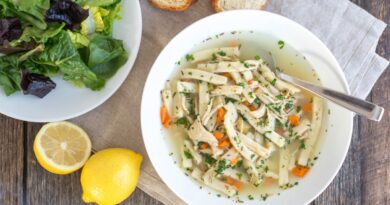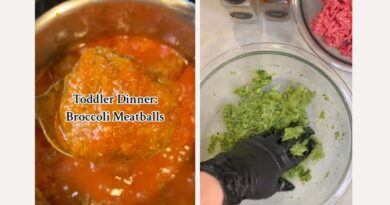The healthiest weight gaining foods for toddlers who need to gain weight
If you would like a PDF version of this blog delivered directly to your inbox, pop your details below.
My child is too thin, how can I help them gain weight?
Some children struggle to gain weight or grow as expected, which may be because they cannot manage to eat enough food to meet their nutritional requirements.
They may have a poor appetite or they have higher nutritional needs, for example due to high activity levels or illness.
It’s important to know that the dietary changes I discuss in this blog are not suitable for long term use without the individualised guidance of a Registered Dietitian and neither is this diet suitable for other members of the family.
I know this can be very worrying for you as a parent. Your health visitor or GP can refer you to an NHS Dietitian for individualised help or you can book with us privately via childrensnutrition.co.uk/consultations.

Is your child really underweight?
Firstly, it’s important to assess whether your child really is underweight.
Sometimes a comment by a friend or family member about your child’s weight or size can cause worry unnecessarily. Comparing your child with another of a similar age, can make us become anxious that our child is too thin.
If you are concerned about your child’s weight, make sure you seek professional advice from your health visitor, GP or a Paediatric Dietitian.
What is normal growth?
Your child’s expected growth is based on their birth weight and length (1) and is plotted on growth (centile) charts found in their red book that you’re given when they’re born.
The red book is also called the Personal Child Health Record and you can read more about the red book in my blog here.
Why is growth and weight important?
How children grow is an indicator of their health and wellbeing (3). Poor growth can also be an indicator of underlying health conditions.
Failure to grow at the expected rate is often referred to by healthcare professionals as ‘faltering growth’ and several years ago it was also called ‘failure to thrive’.
What is faltering growth?
Faltering growth is diagnosed by healthcare professionals using strict criteria;
- A fall across 1 or more weight centiles if the birthweight was below the 9th centile
- A fall across 2 or more weight centiles if birthweight was between the 9th-91st centile
- A fall across 3 or more weight centiles if birthweight was above the 91st centile
- When current weight is below the 2nd centile, regardless of birthweight (2)
Healthcare professionals will also calculate weight to height ratios to assess if their current weight is healthy for your child.
What is BMI?
If your child is over 2 years of age, you can calculate a BMI (2). This can be plotted on a special BMI centile chart (which is different to the one in your red book), to assess whether your child’s BMI is within the healthy range.
This is useful to work out if your child is a healthy weight or any faltering growth (2). GP’s, Health Visitors, Paediatricians and Paediatric Dietitians have access to BMI charts but they are not widely available otherwise.
Instead you can work out your child’s BMI by using this NHS BMI calculator for children. (4)
You will be given some tips and advice based on the results.
What happens if faltering growth is diagnosed?
As faltering growth can be an indicator of underlying health conditions or developmental concerns, your GP will refer you to a Paediatrician (specialist child doctor) for further investigations.
The GP or Paediatrician should also refer you to see a Paediatric Registered Dietitian for your child to have their diet and eating routine assessed (2).
If this doesn’t happen, please ask for a referral. You can book in with us here and be safe in the knowledge you are getting a paediatric specialist dietitian.
If faltering growth is caused by poor nutritional intake, your child can be at risk of malnutrition.
How can I help my child gain weight healthily?
We want to increase the amount of nutrition your child has in each and every mouthful, which means that the food you offer needs to be carefully considered for its nutritional value. I’m going to take you through each of the 5 food groups in turn and show you what to offer:

1. Starchy Carbohydrates – bread, rice, potatoes, pasta, breakfast cereals and other starchy food
-
Serve one of these foods at each meal.
-
Use oil when cooking them such as roast potatoes or chips
,
-
Choose breakfast cereals that have been fortified with vitamins and minerals and serve with whole milk or jersey milk. It’s OK to add sugar too.
-
Stir melted butter or olive margarine though pasta, noodles and rice before serving and serve with grated cheese.
-
Spread butter or olive margarine thickly on bread, toast, crumpets, hot cross buns or crackers.
-
Top with jam, marmalade, peanut butter, lemon curd and even chocolate spread!
-
Add extra cream, butter and cheese to mashed potatoes.
2. Fruits and vegetables
Although we still want your child to have 5 portions of fruit and vegetables per day, it’s important to remember that these are very low in nutritional value. Yes they supply some wonderful vitamins and minerals but those won’t help your child gain weight. Serve them alongside energy boosting foods:
-
Toss vegetables in melted butter or margarine before serving
-
Roast veggies in olive or rapeseed oil, it actually really enhances their flavour.
-
Add grated cheese to veggies when you serve them.
-
Consider vegetables ‘au-gratin’ in a cheese and cream sauce.
-
Raw veggies should be served with an energy dense dip like hummus or mashed avocado combined with cream cheese.
-
Serve fruit with a pot of cream, custard or full fat fromage frais on the side.
-
Make fruit based desserts like rhubarb crumble or apple pie and serve it with ice cream or cream (or both).
-
Make use of salad dressings and salad cream and avoid the reduced fat and sugar versions.

3. Milk and dairy foods and plant based alternatives
Children need 3 portions of dairy foods per day. Make sure these are full fat or whole milk versions in order to ensure they get enough energy, protein, calcium and iodine.
Plant milks unfortunately are very low in nutritional value, they are the nutritional equivalent of skimmed milk in most cases and so are best avoided if your child is struggling to gain weight.
If they have a dairy allergy, your dietitian will be able to prescribe a high energy milk alternative instead.
-
Try jersey milk (gold top) as it contains more energy than whole milk (blue top) and avoid semi skimmed (green top) and skimmed milk (red top).
-
Cheese is an amazing energy booster and can be added to lots of foods from scrambled eggs to pasta dishes, to vegetables, don’t be afraid to use it. The harder the cheese the higher the energy content too so cheddar for example contains more energy than brie.
-
Good cheese based dishes include: pizza, macaroni cheese, burgers topped with cheese (try three different cheeses), cheese on toast or cheese and mayonnaise sandwiches, cheese quiches, jacket potato with butter and cheese.
-
Choose whole milk yoghurt, fromage frais, rice puddings and chocolate desserts. You can use these as in between meal snacks too as well as deserts.
-
Make milkshakes with extra cream or ice cream.
-
Make smoothies with yoghurt, milk and a nut-butter and freeze into ice lolly moulds.

4. Protein foods including meat, fish, eggs, beans, pulses and vegetarian proteins
Protein foods are the building blocks for muscle and help children grow but can’t be used by the body without adequate energy. They can also be quite filling if portion sizes are big.
-
Each meal should contain a protein food, some protein foods also contain iron which provide an additional nutrient boost. These are red meat, dark poultry meat, egg yolk, oily fish, lentils and beans.
-
Eggs are highly nutritious but cook them with oil or butter or margarine for example fried eggs, scrambled eggs with butter and cream, omelettes with cheese or a cheese and cream based quiche. Adding these energy foods to the egg dishes will help your child’s body utilise the protein.
-
If meat comes with visible fat, don’t cut it off till after cooking. For example leave the rind on bacon and some of this fat will melt during the cooking process providing additional energy.
-
Ensure sandwiches always contain a protein based filling such as hummus, peanut butter, tuna canned in oil or mashed sardines. Butter the bread first and add full fat mayonnaise too.
-
Choose oily fish (limit to twice a week for girls and four times a week for boys), which includes salmon, mackerel, sardines, trout. And when you offer white fish look for battered versions and fry rather than oven cook them.

5. Foods high in fat and sugar
The final food group are those foods that in terms of healthy eating we are advised to avoid or eat very little of, so some of these suggestions may come as a surprise. However, when your child needs additional energy to grow these are the best energy providers.
It’s true this food group contains very little in the way of additional nutrients, so here’s how to make the most of them:
-
Cook with olive oil or rapeseed oil as these contain healthy fats.
-
Avocado, oily fish and nut butters also all contain healthy fats.
-
It’s OK to add sugar, in fact I‘d encourage it as sugar is very easy to eat without feeling full and provides energy, sprinkle over fruits, add to desserts and top your child’s cereal.
-
Foods containing pastry such as pies, sausage rolls and danish pastries are also good energy providers.
-
Choose an olive or vegetable based margarine but check on the food label to make sure that this contains at least 70g fat per 100g.
-
Fry food wherever possible, or roast using oil.
-
Cakes, biscuits, chocolate, ice cream and full sugar jelly are all good high energy desserts or snacks.
-
Add butter or margarine to as many foods as possible.
-
Add cream to foods as much as possible.
-
Add jam, chocolate spread, marmalade, honey, maple syrup to foods.
-
Every meal and snack should contain a high fat food.

But aren’t children supposed to avoid sugar?
Sugar isn’t as evil as the press makes it out to be, it’s a simple carbohydrate.
Sugar in excess can be problematic but if children are having problems growing then we can use sugar as an energy boost to help them get there.
It’s good practice to add sugar to other foods as part of meals or snacks to boost the energy value, but limit the amount of time sugar is near your child’s teeth. You can do this by:
-
Offering a drink of water after having a sugary food to wash away any lingering sugar.
-
Avoid sugary drinks like full sugar squash or fizzy drinks, water and milk are actually the best drinks for children.
-
Brush your child’s teeth well, twice a day.
Lots of those foods are really salty too, is that ok?
Long term, a high salt intake is not good for anyone, it’s best to avoid processed food or savoury foods that come in tins, packets or jars as these tend to have salt added. Snacks like crisps or mini packets of savoury biscuits are also high in salt. None of these are recommended here. If you minimise processed foods and don’t add salt to your cooking or at the table, then the salt content of the foods I have suggested are likely to be within the recommended limits for children.
Could my child’s low weight be due to food intolerance?
Yes, if your child is not able to eat sufficient food or absorb sufficient nutrients from that food they could become underweight.
Lactose intolerance for example, could potentially impact on a child’s growth and development if their food intake has to be restricted to manage symptoms but not replaced with sufficient alternatives (6).
Unfortunately, we see this all too often where foods are omitted from children’s diets without the proper advice on how to replace the missing nutrients.
A Paediatric Dietitian will be able to give you tailored dietary advice to make sure your child is getting everything they need for growth and development.
Can constipation contribute to poor appetite?
Yes it can as your child may feel full up and rarely get hungry. Offer fruits and vegetables at least 5 times a day, ensure they get 8 drinks each day and more in warmer weather. You can also swap out white versions of breakfast cereals, pasta, rice and bread to wholemeal or wholegrain versions. I have another blog on managing constipation with food that you can read here.
Should I seek support from professionals to help my child with gaining weight?
Yes and actually this is really important to avoid the health consequences of following a diet like this. It’s essential to make sure diets are not just high calorie but also balanced and your little one is getting everything they need. It’s important to make sure children gain weight healthily.
A Paediatric Dietitian will be able to give you personalised advice for your child and arrange to have your child re-weighed and measured regularly to monitor their progress and make sure changes are working (6).
They will also help you diagnose and address any potential underlying causes and link with other healthcare professionals when needed.
How you ‘food parent’ or interact around food with your child
As well as food, some Paediatric Dietitians will also consider how you feed your child, or how you ‘food parent’.
Each one of us has a food parenting style that describes how we interact with food and eating.
Our style is established from our own experiences of being parented and we unknowingly pass this on to our children (10). Sometimes how you parent around food can affect your child’s food intake (11).

Here are some of the key areas to consider (7):
-
Do you sit down together and eat as a family, sharing the same food? You are your child’s greatest role model so eat as you want them to eat and over time they will.
-
Make sure that when they come to the table there is at least one or two familiar foods as well as some foods they need to learn to like.
-
If they don’t eat well, never come to the rescue with a favourite food. Over time your child’s palette will get smaller and smaller and they will develop nutritional deficiencies.
-
You can say “you don’t have to eat’’ so that your child feels reassured that they won’t be made to eat something they don’t want to.
-
Refrain from talking about their eating performance even though deep down you might be incredibly anxious. It’s best to avoid asking them to eat certain parts of the meal or suggest they have another mouthful or two.
-
Avoid using food rewards like ice cream for pudding if they clear their plate.
-
Encourage your children to get involved in the shopping, preparation and cooking of meals.
-
Have a regular meal and snack time routine throughout the day and stick to it. You want around 3-4 hours in between each of these in order to make sure your child comes to the table with an appetite to eat.
-
Limit meals to around 20 minutes. After then children are unlikely to eat much more and staying at the table can turn mealtimes into a negative experience.
-
Practice the ‘division of responsibility in feeding’ where the parents’ role is to provide the food, decide on where and when you will eat and that is it.
-
Your child’s role is to decide if and in what order to eat and importantly to be in charge of deciding when they’re finished (8).
-
Seek more advice from a Paediatric Dietitian with experience in Food Parenting if your child continues to struggle with fussy or selective eating. They may need some feeding therapy.
Why a good food and snack routine is important for children who need to gain weight
Children have smaller stomachs than adults and need to eat more regularly (6). In addition, they need energy and nutrition for growth which is difficult to manage through meals alone.
A good pattern is 3 meals per day, plus 2-3 smaller snacks spaced at regular intervals throughout the day. This pattern will stay with them right through their teenage years till they have finished growing.
It can be really helpful to plan out your child’s meals and snacks, download my handy meal planner below, where you can plan out what your child is going to eat across the week.
Here’s an example meal routine:
7am Breakfast
10am Morning Snack
12.30pm Lunch
3.15pm Afternoon Snack
5/5:30pm Evening Meal
7pm bedtime snack
Snacks are incredibly useful eating opportunities to make sure children get enough nutrients in the day.
Making sure you have a 2.5-3 hour window between snacks and meals is essential to ensure your child has an appetite and is ready to eat.
Some examples of snacks?

-
Cheese on toast
-
Hummus and breadsticks
-
Peanut butter and jam sandwiches
-
Whole milk yoghurt with fruit
-
Crackers and cheese
-
Chocolate spread on a crumpet
-
Malt loaf spread with butter
-
Toasted teacake with butter and jam
-
Fruit scone with cream and jam
-
Biscuits and whole milk
-
Slice of cake with a glass of milk
-
Flapjack and a smoothie
-
Avocado on toast
My child only eats very small portions, what can I do to help them gain weight?
That’s fine. The key is allowing them to make the decision about what to eat, in which order and crucially when they’ve had enough rather than you making this decision for them.
Sometimes children who drink frequently don’t have enough of an appetite to eat well. I suggest only offering water to drink in between meals, milk can be offered alongside a meal or snack but not in between times.
Both water and milk should be given in a cup rather than a bottle after 1 year of age.
Once you have all this in place, seek professional advice from a Registered Dietitian on improving fussy eating.
Are supplements helpful for gaining weight?
There are some nutritional supplements available for children on prescription to help them gain weight if their faltering growth is caused by a medical condition. Increasing nutrition using food first is often better because the way whole foods are ‘packaged’ seems to play an important role which can be replicated in a supplement.
Weight gain supplements for kids, although available online, should not be introduced without advice from your GP or Paediatric Dietitian.
Should I reduce my child’s activity to help them gain weight?
No, even if your child is underweight it’s important they are physically active (6). Physical activity helps with strength, building muscles and growing bones, alongside social skills and is fun too!.
If your child is very active alongside being underweight, you should definitely see a Paediatric Dietitian for an individualised tailored sports nutrition plan.
Following the steps above will help your child gain weight healthily and maintain a positive relationship with food.
Remember to seek additional support and advice from health professionals and monitor your child regularly.
If you’ve enjoyed what you’ve learned here then I’d like to introduce you to the Happy Healthy Eaters Club. This is a members-only club where you’ll learn how to raise a child who skips to the table (without you having to ask 50 times first), sits down, and happily munches away.
The club will teach you all about food and parenting techniques so that you can nip fussy eating in the bud (or prevent it before it begins) and make you’ll feel safe in the knowledge your child has eaten their nutrients, that they’ll sleep well, grow healthy bones and brains, and not pick up all those bugs.
Your parenting around food means that your little one will learn to be excited to try new foods, family mealtimes are a breeze and there’s not a reward, bribe, or iPad insight and you haven’t spent hours in the kitchen cooking up different meals for everyone either. And I promise you… you’ll no longer be scraping rejected food from the floor! Here’s the link to learn more: https://www.thechildrensnutritionist.com/hhec-open


Sarah Almond Bushell MPhil, BSc (Hons) RD MBDA – Registered Dietitian & Children’s Nutritionist
The post The healthiest weight gaining foods for toddlers who need to gain weight appeared first on The Children's Nutritionist.




